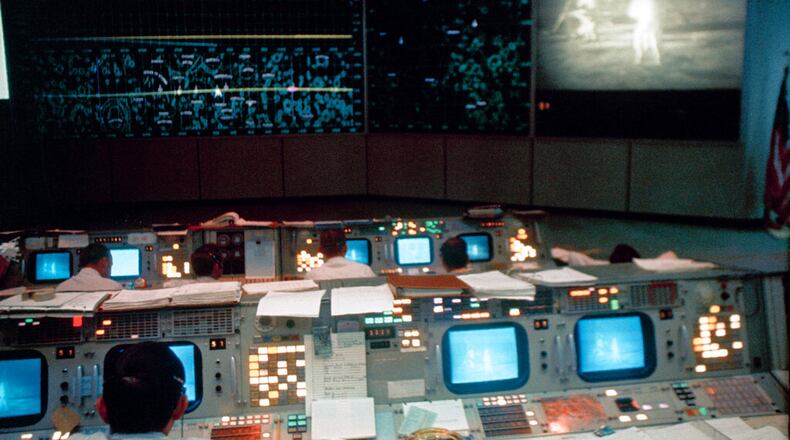The Apollo 11 moon mission landed two astronauts, Buzz Aldrin and Neil Armstrong, on the lunar surface while a third, command module pilot Michael Collins, orbited above on July 20, 1969, in one of the most historic accomplishments in human history
In honor of the 50th anniversary of the milestone space flight, NASA meticulously rebuilt its iconic Apollo-era mission control facility at the Johnson Space Center in Houston, creating a glimpse back in time at the nerve center where teams of experts guided the unprecedented journey from thousands of miles away.
"Apollo captured the world's attention and demonstrated the power of America's vision and technology, which has inspired generations of great achievements in space exploration and scientific discovery," Johnson Space Center Director Mark Geyer said in a statement on NASA's website.
The newly restored mission control facility is where flight control teams planned, trained and directed not just the Apollo missions, but the Gemini missions, Apollo/Soyuz, Skylab, and the space shuttle program until 1992.
The mission control center was partially restored to its Apollo-era configuration over the years, according to NASA, but the full restoration project began in 2017 after $5 million was raised by the nonprofit Manned Space Flight Education Foundation and the nearby city of Webster, Texas.
“By restoring the Apollo Mission Control Center, NASA is preserving the rich history of a remarkable achievement in human spaceflight,” restoration project manager Jim Thornton said.
“This will not only help share our history with visitors from around the world, but also remind our current employees who are planning missions to send humans back to the Moon and then further to Mars, that anything is possible and we are standing on the shoulders of giants,” Thornton said.
The restoration team included members of the Apollo Mission Control teams that supported the astronauts.
"Great pains were taken by these individuals to ensure the authenticity of the control room and the artifacts inside," NASA officials said.
Items in the restored facility, including the visitor's gallery and the simulation support room, include original artifacts that were cleaned and restored, such as the control consoles and displays, or items that were painstakingly recreated based on original samples. Some things were re-created using 3D printers and other items, such as authentic 1960s-era ashtrays for example were searched out by restoration team members in antique shops and online, according to news reports.
Some of the replica items were based on samples from the era such as paint colors, carpet, coffee mugs, clothing items, NASA said. They were placed in the restored facility in locations where they would have been 50 years ago.
“Our goal 50 years ago was to prove we could land humans on the moon and return them safely to Earth. Our goal now is to return to the moon to stay, in a sustainable way,” Geyer said.
He also said he was “thrilled” with the restored mission control facility
“It is my hope that it will serve as inspiration for generations to come,” he said.
About the Author
The Latest
Featured


